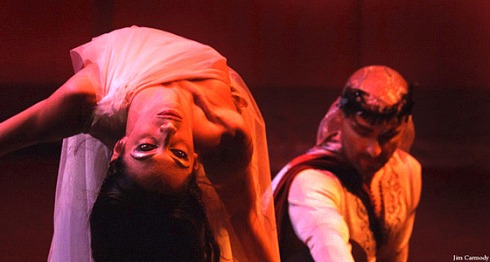For the past three and half years, UCIRA has nurtured the ‘Integrative Methodologies’ Art+Science initiative, utilizing our grants program to establish working relationships between UC researchers and practitioners who integrate art and science methodologies in a broad array of projects and programs.
During spring 2013, UCIRA hosted the first in a series of art+science think tanks in partnership with UC Riverside’s Culver Center for the Arts to forge connections between arts and science practitioners within the context of the research university. The gathering was organized in conjunction with the exhibition “Free Enterprise: The Art of Citizen Space Exploration”, curated by UCIRA CoDirector Marko Peljhan and Tyler Stallings, Director of UC Riverside’s Culver Center.
Over three days, 23 participants each presented their overview of science-art-engineering and design (SAED) activities, shared best practices, identified potential themes and topics— “Big Questions” that needed to be tackled, and initiated potential network opportunities. In addition, they brainstormed future funding sources for a UC-centered SAED initiative, from the National Science INSPIRE (Integrated NSF Support Promoting Interdisciplinary Research and Education) grants as well as foundation and industry/research partnerships. The list of attendees, both across and beyond the UC system, included:
Babette Allina, Rhode Island School of Design
Nancy E. Abrams, The New Universe + the Human Future, UCSC
Sheldon Brown, Arthur C. Clarke Center for Human Imagination, UCSD
Yvonne Clearwater, New Media Innovation, NASA Ames Research Center
Pablo Colapinto, Media Arts + Technology Systemics and Allosphere, UCSB
Amanda McDonald Crowley, Curator/Director, Studio 1A, New York
David Familian, Director of Exhibitions, Beall Center for Art + Technology, UCI
Liz Losh, Art + Techno-lit Program, Sixth College, UCSD
Guna Nadarajan, Dean, School of Art and Design, U of Michigan
Michael Neff, Technocultural Studies, UCD
Jennifer Parker, Digital Arts Open Lab, UCSC
Marko Peljhan, CoDirector, UC Institute for Research in the Arts, Media Arts + Technology
Eric Paulos, Electrical Engineering and Computer Science, UCB
Yadegari Shahrokh, Center for Research in Computing and the Arts, UCSD
Tyler Stallings, Director, Culver Center for the Arts, UCR
Matthew Turk, Media Arts and Technology / Computer Science + Engineering, UCSB
Victoria Vesna, Design Media Arts/Art/Sci Center, UCLA
Noah Wardrip-Fruin, Digital Arts and New Media (DANM) Expressive Intelligence Studio, UCSC
John Weber, Director, Institute for Arts and Sciences, UCSC
Kathleen Wong, Principal Publications Coordinator, UC Natural Reserve System, UC Office of the President
Kim Yasuda, CoDirector, UC Institute for Research in the Arts, UCSB
Kathleen Wong, Principal Publications Coordinator for the UC Natural Reserve System, offers some thoughts on the think tank.
Art+Science at UC: A Natural Trend
by Kathleen M. Wong
From the enthusiasm about STEAM lately, you might think the Industrial Revolution was starting all over again. But in this case, STEAM stands for science, technology, engineering, arts, and mathematics—a movement to blend these disciplines to spark creative advances across all of these fields. The “STEAM revolution” promoting the inclusion of the arts in science research is gaining momentum across the country, and UC is leading the way.
Participants representing the nine general UC campuses gave presentations about interdisciplinary arts and science efforts across the UC system. Each campus is evolving its own flavors of STEAM initiatives. Examples include UCSC’s OpenLab, which allows people from any discipline to share equipment and do hands-on work together; UCLA’s Art | Sci Center + Lab, which encourages the creation of a “third culture” bridging the arts and sciences, and UCSD’s Arthur C. Clarke Center for Human Imagination will tap scientists, artists, and scholars to solve major human problems.
One major hurdle for STEAM initiatives is to draw more people—especially scientists—to participate. Think tank participants agreed that the fruits of art+sci collaborations must provide professional recognition. Further, artists and scientists aren’t measured by the same yardstick. Artists receive recognition for exhibiting their work in shows or performances. Scientists are judged by the peer-reviewed papers they publish. Neither can afford to spend much effort on work not valued by their peers. These cultural differences may account for the wall of silence at least one artist ran into trying to find scientists to work with.
Part of that indifference might be ascribed to not knowing what art+science can offer. Scientists are familiar with the idea of an artist helping to visualize new species or concepts. They may not appreciate how working with an artist can help them tackle problems from new perspectives, and expand the boundaries of human knowledge. Those, of course, are the same reasons many people pursue science as a career.
One unit of UC is ideally positioned to bring scientists and artists together. The UC Natural Reserve System is a network of protected wildland areas across California that serve as outdoor laboratories, studios and classrooms. Using a reserve involves staying at a remote and beautiful place over weeks or months, with other reserve users their primary society. Inevitably, people get to know one another. They spark friendships while relaxing over a campfire, taking a morning hike, or cooking dinner in a communal reserve kitchen. Reserve visitors learn what everyone else is working on, whether modeling climate change, writing poetry, studying chipmunk ranges, or tracing ancient earthquake faults. All of these topics and more could profit from creative thinking and innovation from new directions.
Since its inception in 1965, the NRS has welcomed biologists and writers, painters and geologists, dancers and astronomers. But past outreach efforts have been aimed more to scientists than artists.
The NRS is now joining with UCIRA to expand arts opportunities at reserves, offering to provide guidance in designing and developing artist-in-residency programs at reserves, to provide access to artists as well as awareness of the NRS by engaging arts research communities across UC. These efforts should encourage more citizens of the art world and residents of planet science to work together as equal partners in the future.
Kathleen M. Wong is Principal Publications Coordinator for the UC Natural Reserve System.

Rock art panels at NRS reserves are the precursors of tomorrow’s art and science collaborations. Image credit: Kathleen M. Wong




















































